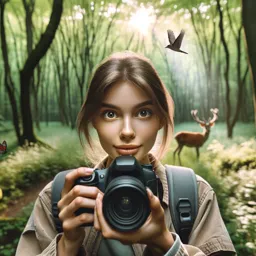Introduction
Wildlife photography is an exhilarating and challenging genre, offering photographers the unique opportunity to capture the raw beauty of animals in their natural habitats. Whether you’re aiming to document elusive creatures or simply wish to bring the wonders of nature closer to audiences, mastering dynamic techniques can elevate your wildlife shots from ordinary to extraordinary.
Understanding Your Subject
Success in wildlife photography starts with learning about the animals you wish to photograph. Understanding their behavior, habitats, feeding routines, and movement patterns will help you anticipate great photo opportunities and ensure you remain respectful of their environment.
- Spend time observing without your camera.
- Take notes on animal routines and preferred areas.
- Always keep a safe distance to avoid disturbing your subjects.
Gear and Settings: Getting Ready for Action
While professional gear can help, stunning wildlife photography is also possible with entry-level equipment. Here are some essential gear tips:
- Telephoto Lenses: Invest in lenses with at least 300mm focal length for safe and close shots.
- Tripods and Monopods: Stability is key, especially in low-light or distant scenarios.
- Fast Shutter Speeds: Use faster speeds to freeze motion, particularly when photographing birds or running animals.
- Continuous Shooting Mode: Capture a rapid sequence of shots to increase your chances of getting the perfect moment.
Composition: Creating Impactful Images
Great wildlife photography is more than just a sharp photo of an animal—it’s about telling a story. Use these composition tips to add depth and emotion to your work:
- Rule of Thirds: Position your subject off-center for more dynamic images.
- Include the Environment: Sometimes showing the animal’s habitat adds important context.
- Focus on the Eyes: A tack-sharp eye draws viewers into the image.
Light and Timing: The Golden Hours
Natural light is your best friend in wildlife photography. Early morning and late afternoon, known as the golden hours, provide soft, warm light that enhances textures and colors. Be patient and prepared; sometimes the best shots require hours of waiting for the perfect light or animal behavior.
Ethics and Conservation
Always respect wildlife and their habitats. Avoid causing stress to animals, do not remove creatures from their environments for a better shot, and refrain from using bait or sound lures. Your images can also be powerful educational tools to promote conservation and awareness.
Conclusion
Wildlife photography is a rewarding pursuit that combines technical skill, patience, and a deep appreciation for nature. With careful preparation, ethical practices, and a creative approach, you can capture images that shine a light on the wild wonders of our world.
































